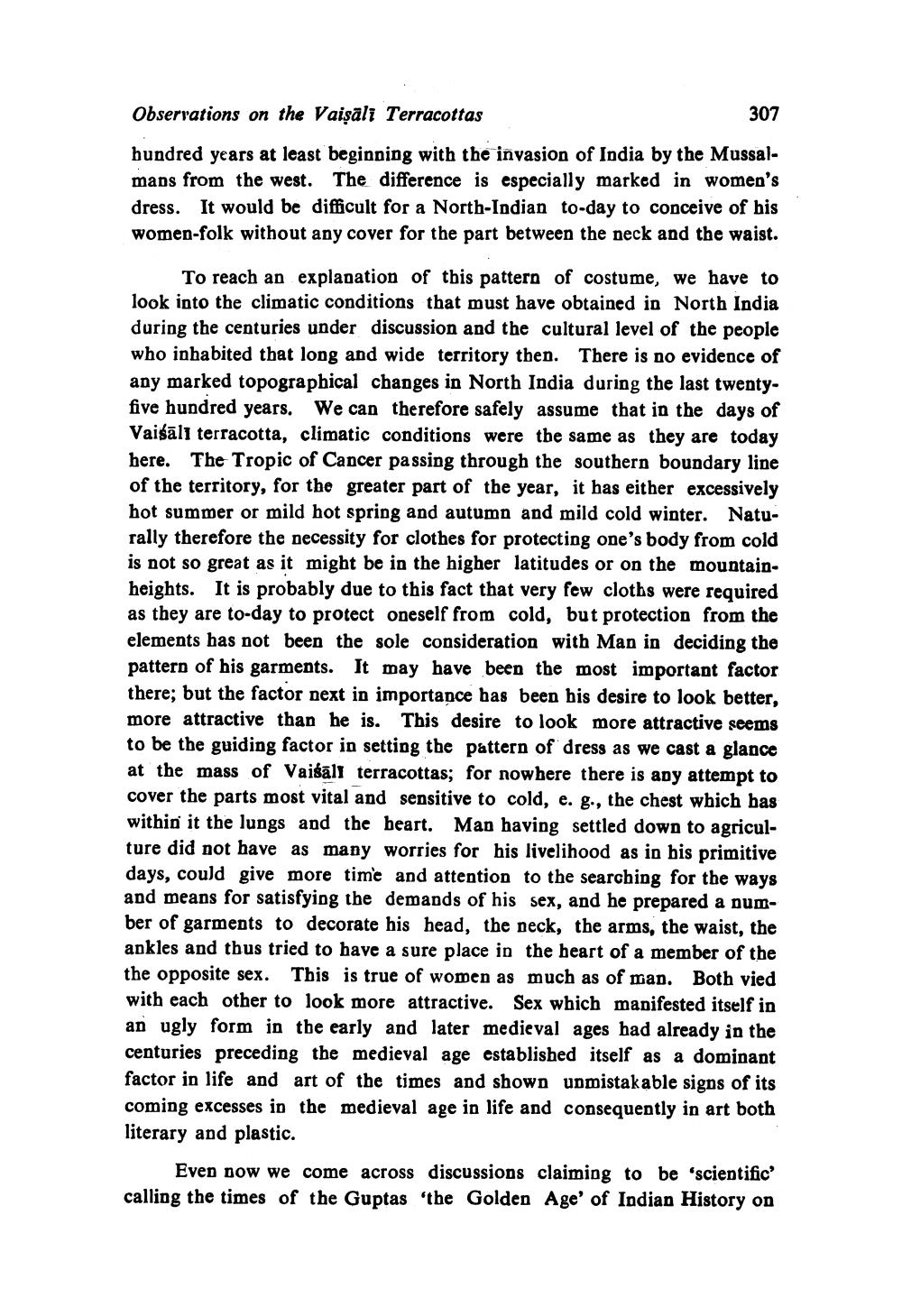________________ Obserrations on the Vaisali Terracottas 307 hundred years at least beginning with the invasion of India by the Mussalmans from the west. The difference is especially marked in women's dress. It would be difficult for a North-Indian to-day to conceive of his women-folk without any cover for the part between the neck and the waist. To reach an explanation of this pattern of costume, we have to look into the climatic conditions that must have obtained in North India during the centuries under discussion and the cultural level of the people who inhabited that long and wide territory then. There is no evidence of any marked topographical changes in North India during the last twentyfive hundred years. We can therefore safely assume that in the days of Vaisali terracotta, climatic conditions were the same as they are today here. The Tropic of Cancer passing through the southern boundary line of the territory, for the greater part of the year, it has either excessively hot summer or mild hot spring and autumn and mild cold winter. Naturally therefore the necessity for clothes for protecting one's body from cold is not so great as it might be in the higher latitudes or on the mountainheights. It is probably due to this fact that very few cloths were required as they are to-day to protect oneself from cold, but protection from the elements has not been the sole consideration with Man in deciding the pattern of his garments. It may have been the most important factor there; but the factor next in importance has been his desire to look better, more attractive than he is. This desire to look more attractive seems to be the guiding factor in setting the pattern of dress as we cast a glance at the mass of Vaisali terracottas; for nowhere there is any attempt to cover the parts most vital and sensitive to cold, e. g., the chest which has within it the lungs and the beart. Man having settled down to agriculture did not have as many worries for his livelihood as in bis primitive days, could give more time and attention to the searching for the ways and means for satisfying the demands of his sex, and he prepared a number of garments to decorate his head, the neck, the arms, the waist, the ankles and thus tried to have a sure place in the heart of a member of the the opposite sex. This is true of women as much as of man. Both vied with each other to look more attractive. Sex which manifested itself in an ugly form in the early and later medieval ages had already in the centuries preceding the medieval age established itself as a dominant factor in life and art of the times and shown unmistakable signs of its coming excesses in the medieval age in life and consequently in art both literary and plastic. Even now we come across discussions claiming to be 'scientific calling the times of the Guptas 'the Golden Age of Indian History on




